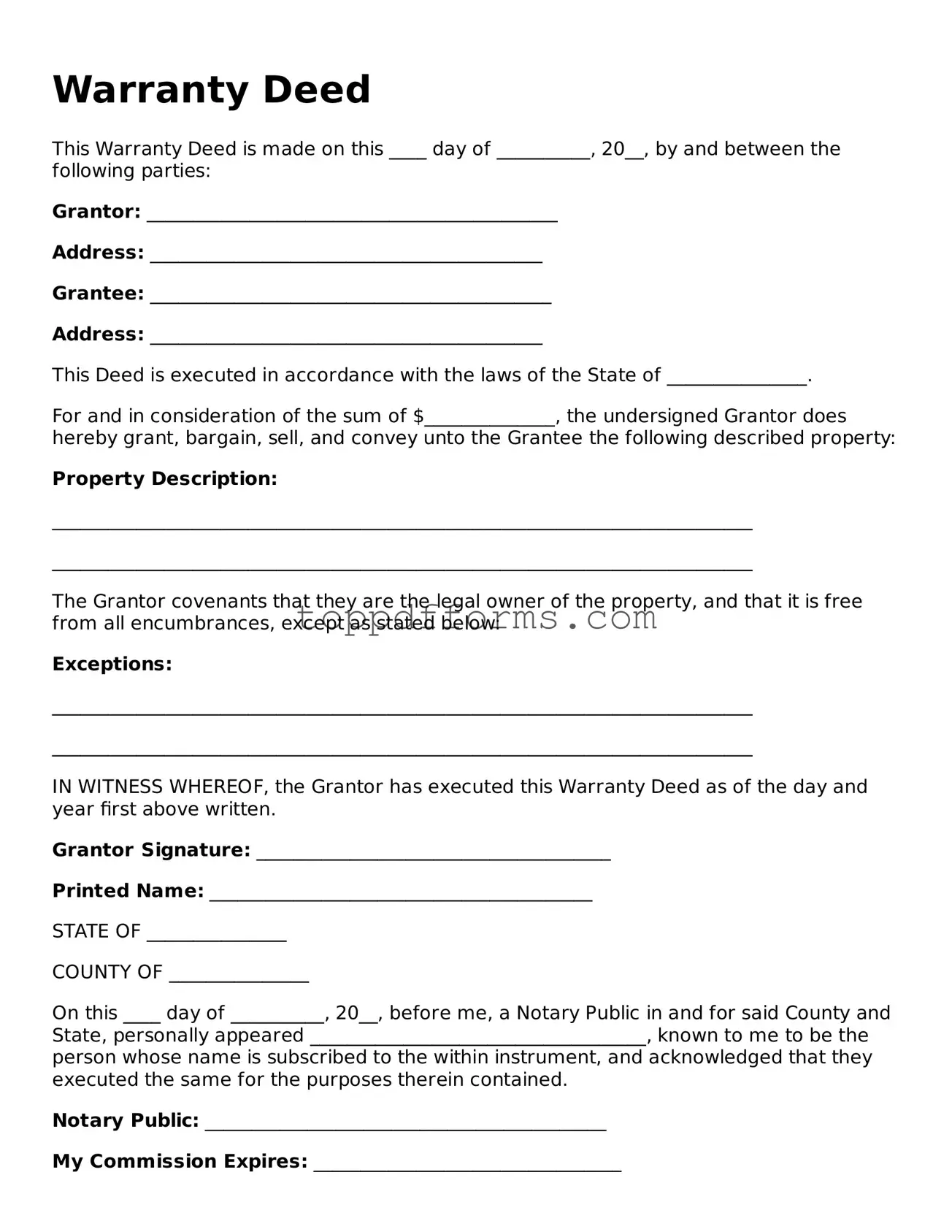What is a Deed form?
A Deed form is a legal document used to transfer ownership of property or to formalize an agreement between parties. It serves as a written record of the transaction and outlines the terms and conditions agreed upon by the involved parties. Deeds can pertain to real estate, personal property, or other legal agreements.
What types of Deed forms are there?
There are several types of Deed forms, including warranty deeds, quitclaim deeds, and special purpose deeds. A warranty deed guarantees that the seller has clear title to the property and the right to sell it. A quitclaim deed transfers whatever interest the seller has in the property without any guarantees. Special purpose deeds can serve specific functions, such as transferring property into a trust.
Who needs to sign a Deed form?
Typically, the parties involved in the transaction must sign the Deed form. This includes the seller, who is transferring ownership, and the buyer, who is receiving it. In some cases, witnesses or a notary public may also be required to validate the signatures and ensure the document is legally binding.
Is a Deed form required for all property transfers?
While a Deed form is commonly required for most property transfers, certain informal agreements or transfers between family members may not necessitate a formal Deed. However, it is advisable to use a Deed to protect both parties and ensure that the transaction is legally recognized.
How do I fill out a Deed form correctly?
To fill out a Deed form, start by clearly identifying the parties involved, including their full legal names and addresses. Next, provide a detailed description of the property being transferred, including its legal description. Finally, ensure that all required signatures are included and that the document is notarized if necessary. It may be beneficial to consult a legal professional to ensure accuracy.
What happens after a Deed form is signed?
Once a Deed form is signed, it typically needs to be recorded with the appropriate government office, such as the county recorder or clerk's office. This recording makes the transfer of ownership official and provides public notice of the new ownership. After recording, the buyer should keep a copy of the Deed for their records.
